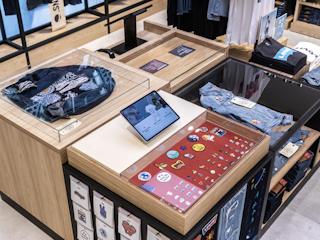In an age where customers expect to move fluidly between channels, every glitch, gap or inconsistency creates a break in trust, and a break in revenue.
The very idea of omnichannel focuses on maintaining consistency across all customer touchpoints and channels through effective and personalized end-to-end communication and onboarding.
The current opportunity, then, is more than reducing friction. It's about creating strong emotional bonds and ensuring brands reflect their customers' values and desires.
This results in what we call an Omnichannel Mirror, which is what empowers brands to build seamless experiences and lasting relationships.
The emotional ROI of personalization is all about win-win
Customers expect brands to build emotional connections with them.
As Bain & Company writes, customers want relationships, not just easy experiences. This is even more pronounced when you have 50 GB of customer datapoints. Emotional loyalty, the feeling of being understood, valued and inspired, is what drives sustained revenue in retail, luxury and consumer packaged goods.
Therefore, 1:1 personalization today must go beyond demographics and behavior. It must tap into why someone buys: their passions, their values, their identity.
Think of a luxury skincare brand not just suggesting a product based on skin type, but aligning with the customer’s personal beliefs around sustainability, beauty standards or wellness goals. (In a later post, I’ll explore how this directly connects to Abraham Maslow’s notion of self-actualization.)
In this example, the luxury skincare brand is holding up an Omnichannel Mirror in front of their customer. That mirror reflects a specific purpose in a specific moment, underscoring the values that the brand and their customer share.
That’s a true 1:1, win-win relationship.
The Omnichannel Mirror: What it really means at Valtech
Too many brands treat each channel like an isolated storefront.
The Omnichannel Mirror framework aligns channels by framing every touchpoint as something that reflects the customer’s own reality back to them. Those touchpoints are genuinely customized, smartly contextualized and emotionally intelligent.
AI is useful here because it’s often better than we are at detecting and understanding other people’s emotions. Whether it’s a personalized message in an app, a store associate armed with AI-powered clienteling data or a seamless click-and-collect experience, the brand is in sync with the consumer. Bolder even: The brand becomes what the consumer wishes it to be.
At its best, the mirror doesn’t distort or impose. It listens and reflects. This is how loyalty is earned and long-term trust gets unlocked.
Data as a reflection pool, not a warehouse
Data alone doesn’t build emotional connection, interpretation, relevance or activation.
Many brands have vast reservoirs of customer data scattered across their CRM, ecommerce platforms, loyalty programs and in-store systems. But without real-time 1:1 orchestration, this data becomes a stagnant warehouse, not a mirror. It reflects nothing back to the customer.
To create true value, brands must treat data as a dynamic reflection pool, one that constantly responds to customers’ behaviors, moods and motivations. That means:
- Real-time personalization based on in-the-moment intent signals
- AI-powered product recommendations that adapt with each interaction
- Clienteling and MarTech tools that empower associates to deliver humanized, data-driven service in physical locations
- Unified customer profiles that blend behavioral, transactional and emotional signals (this is the end of segments based on pure demographic variables)
When brands reflect their customers in real time — not weeks later in an automated drip campaign — they move from being reactive to emotionally proactive.
The role of composability
To meet customers' evolving needs, rigid systems won't suffice. A composable enterprise uses flexible, adaptable digital components that grow with customers.
Composable commerce allows brands to:
- Orchestrate experiences across customer-facing platforms (and across their retail partners in a B2B2C mode)
- Rapidly test and deploy new features
- Scale personalization efforts without tech bottlenecks
- Seamlessly integrate AI-powered services into every channel (Google is doing extremely well, even if my job is to remain agnostic)








